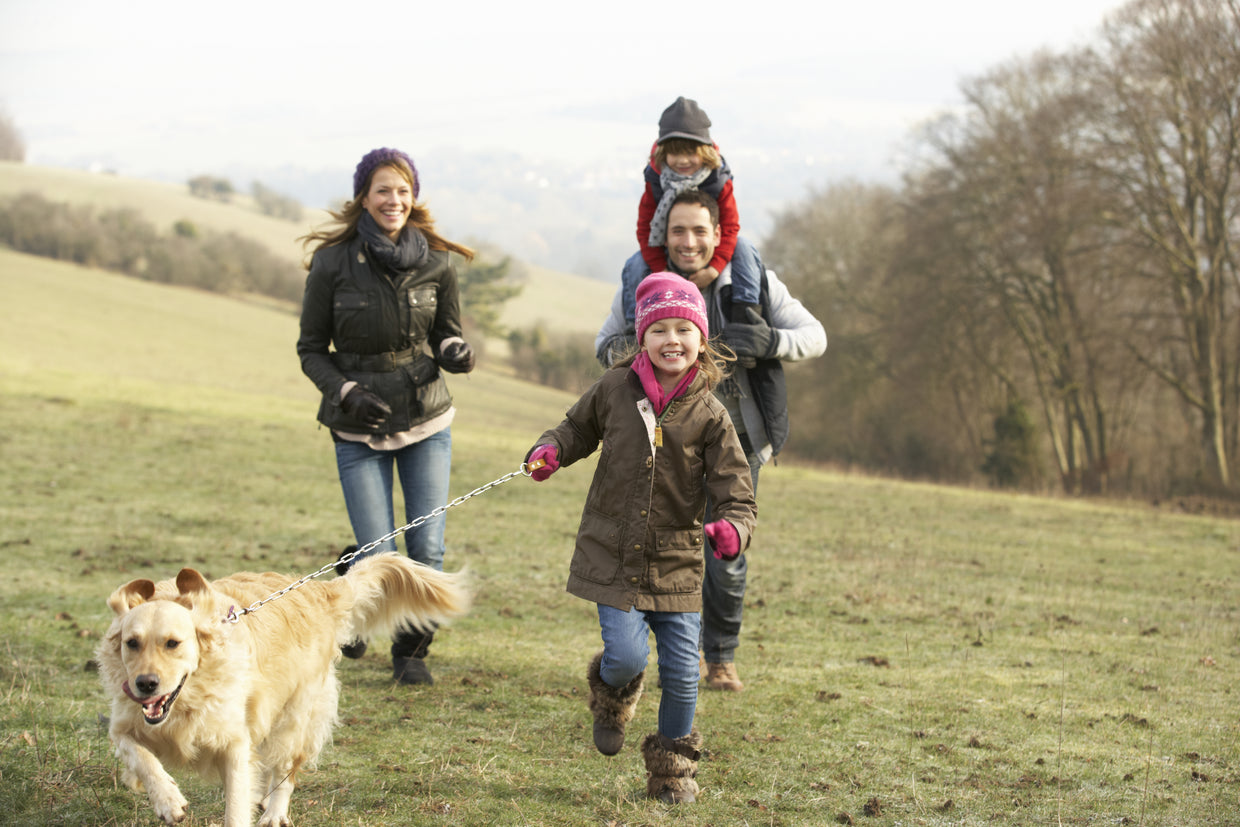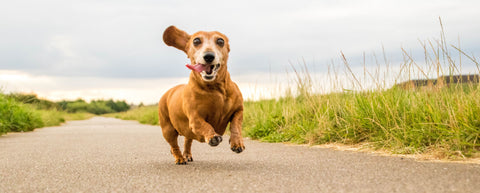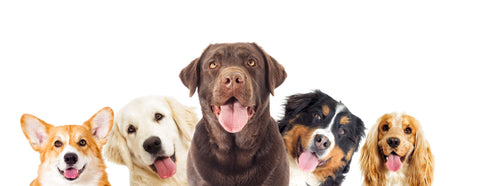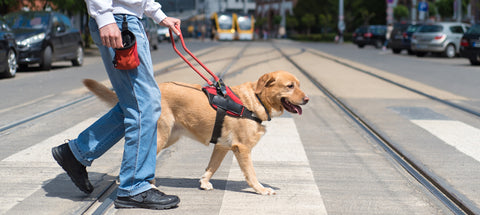In a recent survey, we discovered that 41% of dog owners say their pet has stiff joints. This is a huge number and sad news for animal lovers. Luckily, though, there are lots of ways you can help your pooch. Here are a few ideas.
Spotting the signs
Most of the 2,000 dog owners that we spoke to in our survey said they were confident that they could spot signs when their dog was not feeling on top form.
“I know my dogs well. When there is a problem, even if I am not sure what it is, I just know because I 'read' my dogs.”
Dog owners told us that the most common signs of joint stiffness were when there was a change in the way their dog walked or ran with 63% of people telling us this. And 62% of people told us that they also notice that their pets were slower to get up on their feet after resting.
Less jumping, walking and playing
Other signs included:
- A reluctance to jump up or down (61%)
- Being significantly slower than normal on the daily walk (59%)
- A reduced desire to play games (47%)
Does this sound like your dog? Here are the main signs of joint stiffness to look out for.

Steps, slopes and slippery floors
Where there were signs of stiffness, sloped surfaces and steps caused problems for around half of dogs (52%), while slippery surfaces such as tile and laminate floors were difficult for just under a third of pets (31%).
How to help a dog with joint stiffness
It’s tough to see your furry best friend with stiff joints, especially if they’ve lost some of their bounce and enthusiasm for life. You want to see them out there, full of beans, tail wagging and raring to go. Just like they used to.
So what can you do?
When concerned about their dog’s joints, 42% of dog owners from our survey had taken their dog to the vet for a general check-up.
“How did I help my dog? We asked the vet to come for a home visit.”
Faced with a dog with stiff joints, almost half of owners had shortened the distance of their walks and around a third went out for fewer walks. Exercise is so important but by modifying it slightly you’ll make it easier for your dog.
Rethinking pet playtime
A quarter of owners said that they had cut back on playtime with their pet in order to avoid making joint stiffness worse. If you think that your dog is less keen than before to race after a ball or jump up to play catch, the good news is that there are plenty of alternative games for you to play.
“I know something’s not right when my dog doesn’t lay on his back for belly rubs.”
We love the Bubabloon balloon toy. Simply blow up an ordinary balloon, wrap the brightly-colored cover around it, and your new game is ready to go! It’s much lighter than a rubber ball or a small soccer ball, so there’s less risk of dogs injuring themselves during play.
And if long walks are off the menu, keep your dog busy with a treat-dispensing toy. Opt for a traditional Kong Wobbleror maybe a purple Busy Buddy Squirrel Dude (So, we think he looks more like a beaver but still fun either way!)
Adapt your home
In our survey, a quarter of those surveyed told us they’d adapted their homes to make life easier for dogs with stiff joints. Changes included putting in ramps, steps, non-slip mats, transparent grip tape or laying carpet.

Swap shiny floors for non-slip mats
Wooden floors may look beautiful, but they’re hard work for canine pals with joint stiffness.
One suggestion is to lay carpet instead. Or putting down non-slip mats over wooden flooring or tile so your dog avoids skidding is a great way to help.
Avoid jumping and stretching
If your dog already has stiff joints, it can be a good idea to avoid too much jumping and stretching. It can be hard when your pooch is naturally playful, but the less stress on their joints the better when they are already stiff. Help your four-pawed friend stay mobile by:
- Using a ramp to get them in and out of the car
- Putting their food and water in raised-height dog bowls
- Thinking about an orthapaedic dog bed that helps cushion and support their joints.
Walkies – slow and steady

One of the more obvious signs of joint stiffness in our dogs is a slowing down when walking – they can lag behind or even be reluctant to go out like they used to,
A simple way to help your pooch with stiff joints is to change up your walking routine slightly. Think about your pace – often times we set off on walkies without thinking; it’s part of our daily routine after all. But take a moment to think about your pace – slowing down will help your dog if they have stiff joints – and you might get to enjoy your neighborhood or podcast more too! And then try taking a shorter route or keeping your time out less than usual. Your pooch will still get their exercise but there will be less stress on their joints.
Try a joint supplement
When we asked dog owners in our survey, 41% had given their pets supplements to help aid joint mobility.

We recommend YuMOVE Joint Supplements to help support healthy joint function and promote mobility – which all help with joint stiffness. We’re the UK’s number one veterinary joint brand [1] and YuMOVE is clinically proven to work in just six weeks [2]. Can you imagine anything better than your pooch back to their old ways in under 2 months?
YuMOVE’s premium, high-quality formula is packed with ingredients that help soothe stiff joints, including ActivEase® Green Lipped Mussel. There’s specialist joint support for every kind of dog in the YuMOVE range, from canine athletes and working dogs to older dogs. It’s a great way to help prevent joint stiffness and promote your dog’s mobility long-term.
Ask us – we’re here to help!
If you’d like any advice on the right YuMOVE supplement for your dog, do get in touch by calling us on 844 570 3222 or email us at info@yumove.com.
Or head over to our Facebook and Instagram pages which are great for dog lovers and packed full of cute pooches and handy hints!
[1] Kynetec VetTrack August 2019. Sales of YuMOVE branded products through veterinary wholesalers.
[2] Study conducted by Royal Veterinary College










